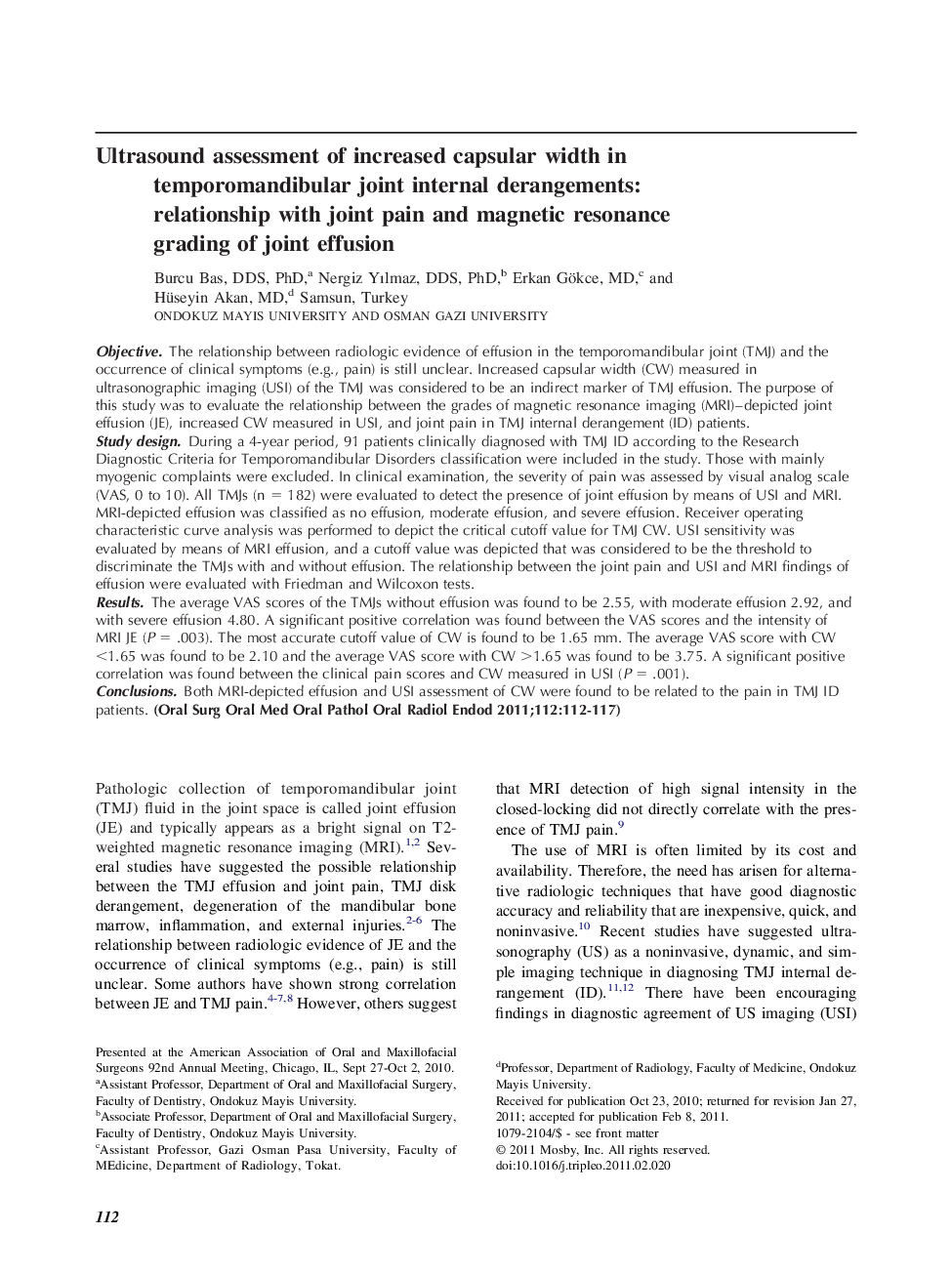| Article ID | Journal | Published Year | Pages | File Type |
|---|---|---|---|---|
| 3166995 | Oral Surgery, Oral Medicine, Oral Pathology, Oral Radiology, and Endodontology | 2011 | 6 Pages |
ObjectiveThe relationship between radiologic evidence of effusion in the temporomandibular joint (TMJ) and the occurrence of clinical symptoms (e.g., pain) is still unclear. Increased capsular width (CW) measured in ultrasonographic imaging (USI) of the TMJ was considered to be an indirect marker of TMJ effusion. The purpose of this study was to evaluate the relationship between the grades of magnetic resonance imaging (MRI)–depicted joint effusion (JE), increased CW measured in USI, and joint pain in TMJ internal derangement (ID) patients.Study designDuring a 4-year period, 91 patients clinically diagnosed with TMJ ID according to the Research Diagnostic Criteria for Temporomandibular Disorders classification were included in the study. Those with mainly myogenic complaints were excluded. In clinical examination, the severity of pain was assessed by visual analog scale (VAS, 0 to 10). All TMJs (n = 182) were evaluated to detect the presence of joint effusion by means of USI and MRI. MRI-depicted effusion was classified as no effusion, moderate effusion, and severe effusion. Receiver operating characteristic curve analysis was performed to depict the critical cutoff value for TMJ CW. USI sensitivity was evaluated by means of MRI effusion, and a cutoff value was depicted that was considered to be the threshold to discriminate the TMJs with and without effusion. The relationship between the joint pain and USI and MRI findings of effusion were evaluated with Friedman and Wilcoxon tests.ResultsThe average VAS scores of the TMJs without effusion was found to be 2.55, with moderate effusion 2.92, and with severe effusion 4.80. A significant positive correlation was found between the VAS scores and the intensity of MRI JE (P = .003). The most accurate cutoff value of CW is found to be 1.65 mm. The average VAS score with CW <1.65 was found to be 2.10 and the average VAS score with CW >1.65 was found to be 3.75. A significant positive correlation was found between the clinical pain scores and CW measured in USI (P = .001).ConclusionsBoth MRI-depicted effusion and USI assessment of CW were found to be related to the pain in TMJ ID patients.
